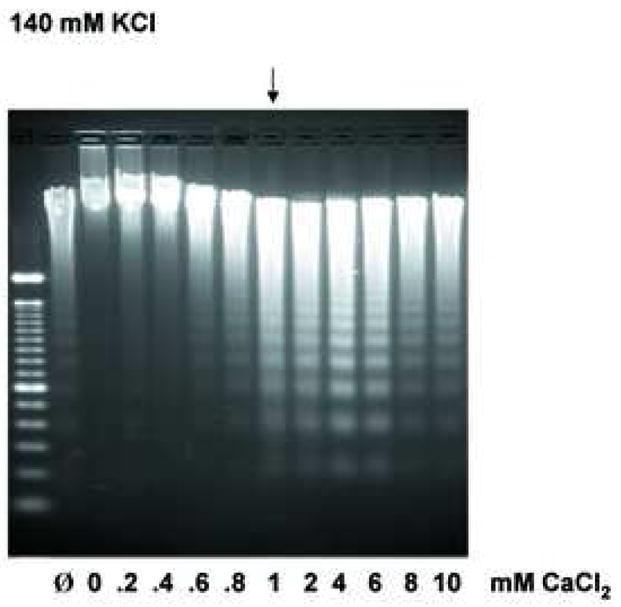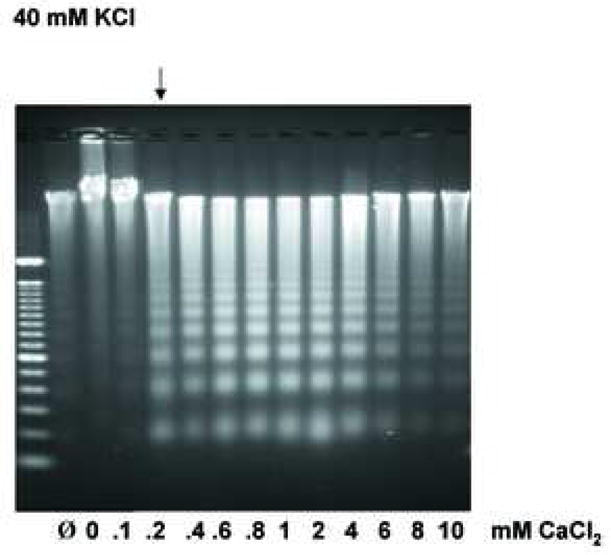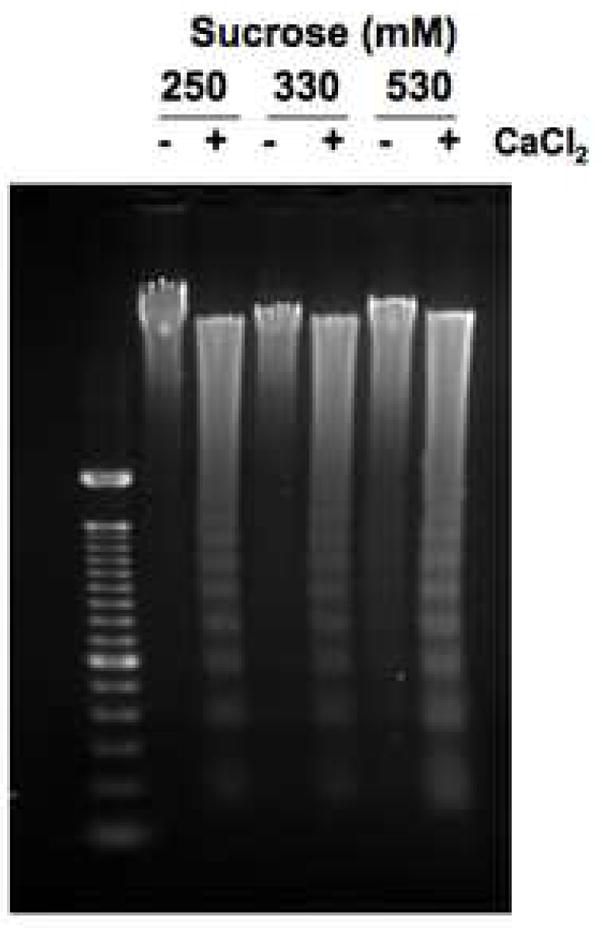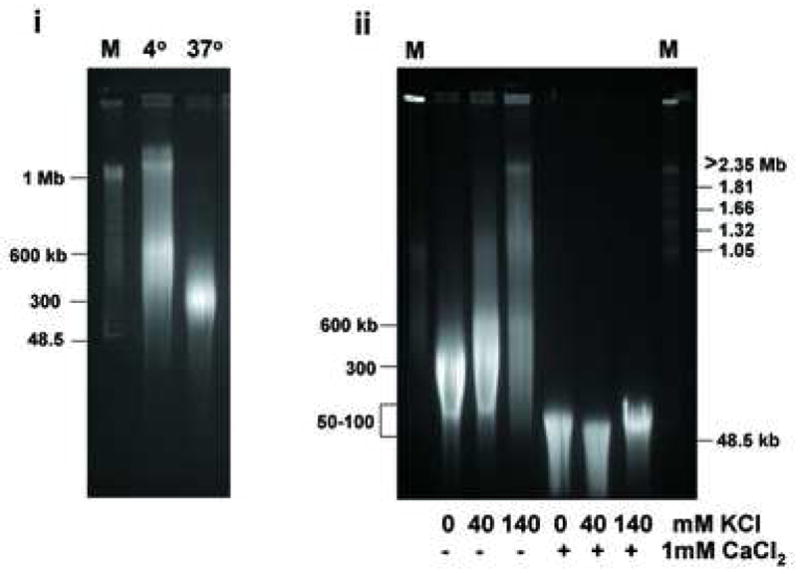Fig. 6.




Extensive analysis of KCl effect on DNA degradation. (a) The effect of Ca2+ under the physiological concentration of K+ at 140 mM on Ca2+-dependent DNA degradation. Nuclei were incubated in isolation buffer containing 140 mM KCl with an increasing concentration of CaCl2. The arrow indicates the initial concentration of CaCl2 with considerable internucleosomal DNA degradation. “Ø” denotes control nuclei maintained on ice that was not exposed to either 40 mM or 140 mM KCl buffer. “0” denotes nuclei resuspended in the respective KCl buffer however in the absence of CaCl2. The data shown represents one of three independent experiments. (b) The effect of Ca2+ in the “apoptotic concentration” of K+ at 40 mM on Ca2+-dependent DNA degradation. Nuclei were incubated in the same condition as above except with the buffer containing 40 mM KCl. In a buffer containing 40 mM KCl, a 5 times smaller Ca2+ concentration is sufficient to trigger the degradation of internucleosomal DNA. The data shown represents one of three independent experiments. (c) Effect of osmolarity of sucrose in buffer on the Ca2+-dependent DNA degradation. Nuclei (2 × 106) were incubated in buffer containing sucrose (330 and 530 mM equivalent concentration to the addition of 40 and 140 mM KCl, respectively), with or without 1.0 mM CaCl2. The data shown represents one of two independent experiments. (d) Pulsed field gel electrophoresis (PFGE) of DNA degradation products in the presence of K+. Nuclei (2 × 106) were incubated in buffer containing 40 or 140 mM KCl with or without 1 mM CaCl2. i, DNA degradation during the incubation of nuclei. ii, Inhibition of the Ca2+-dependent and independent DNA degradation by K+. M; size marker of DNA, C; Control. The data shown represents two experiments.
